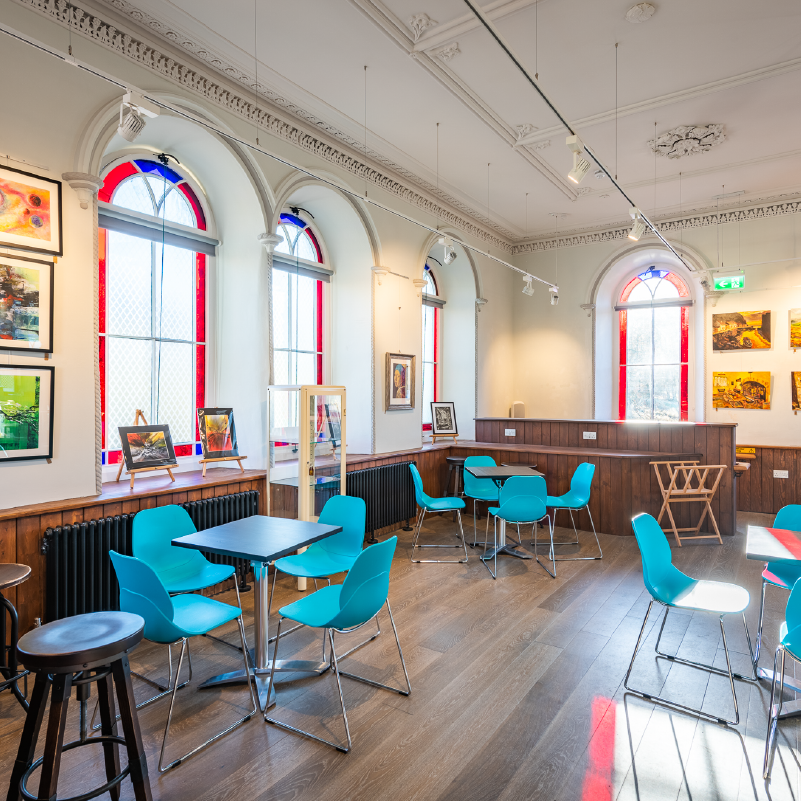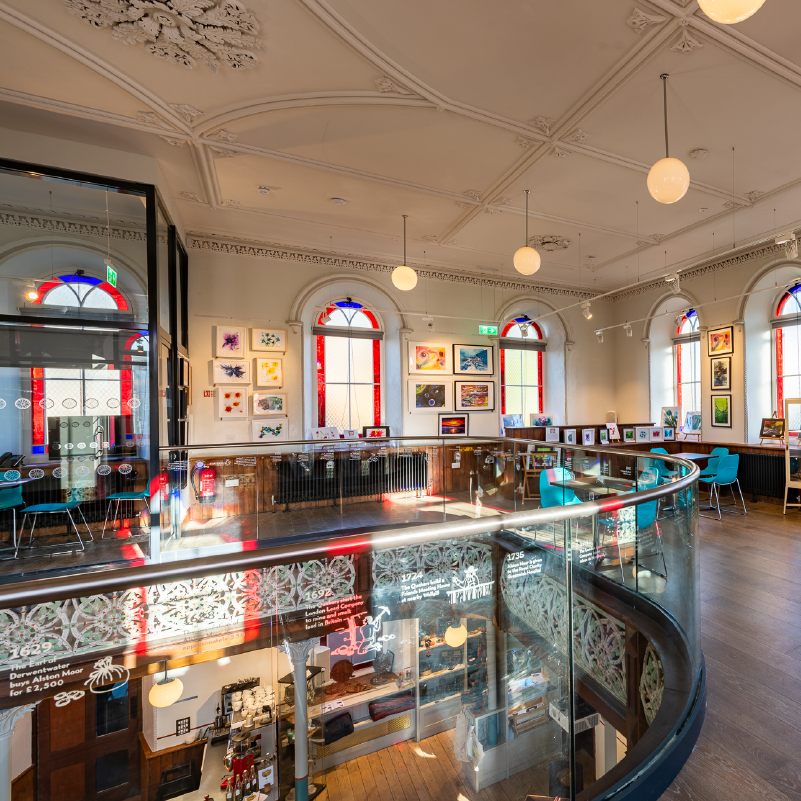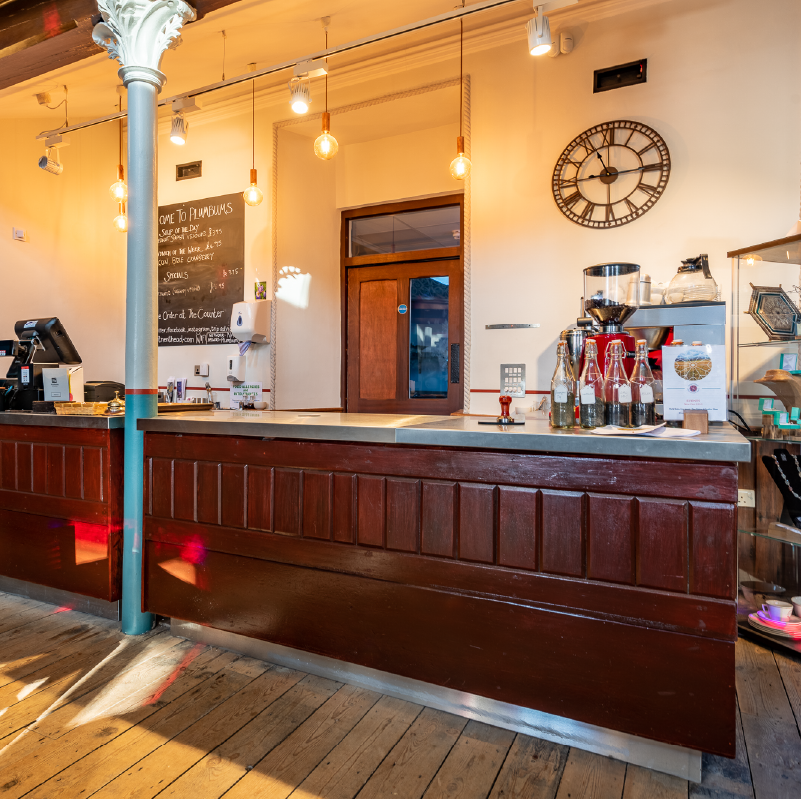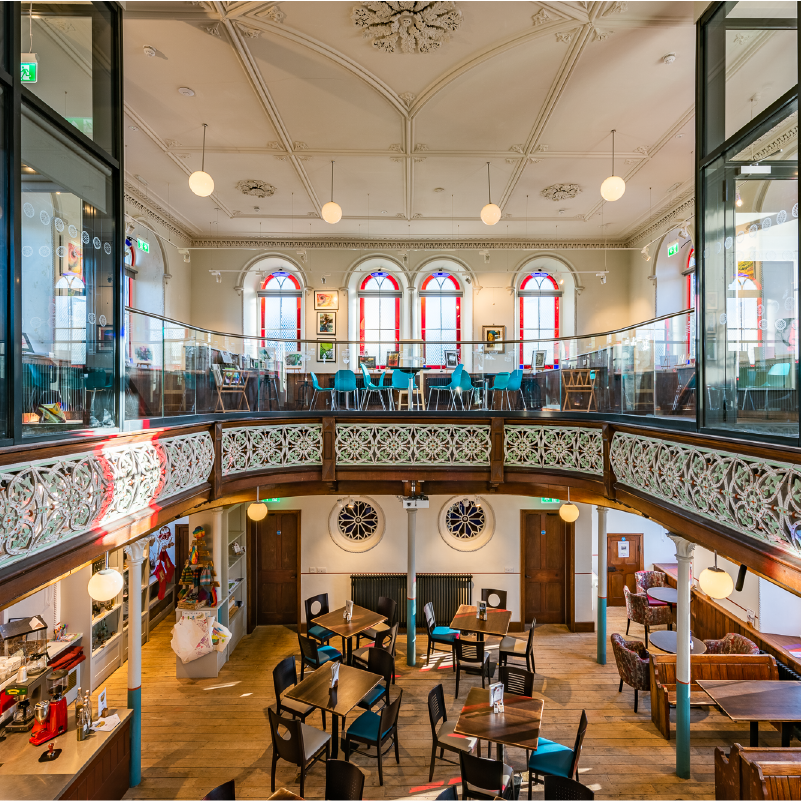



For a settlement of its size and rural location, Nenthead can certainly claim more than its share of fascinating firsts and facts.
It lies within the eastern boundary of Cumbria at the crossroads with both Durham and Northumberland.
At approximately 1,500ft, it is one of the very highest villages in England, sits within an Area of Outstanding Natural Beauty and boasts a pioneering history that is still visible to this day.
In the 18th and 19th centuries it was a major centre for lead and silver mining. Such was its productivity that it was here the Quaker London Lead Company established one of the first purpose-built industrial villages in England, laying the foundations for today’s social welfare system.
The reforming Quakers built housing, a school with compulsory education for both boys and girls, public baths and a washhouse for the miners and their families. Nenthead was the first village in the UK to have a free lending library in its reading room and electric street lighting from excess power generated by the mines.
The company was a leader in refining silver from lead and this would go to the Mint, coins produced from it having a mark to distinguish its origins.
Other pioneers associated with Nenthead are civil engineer John Smeaton who, at the peak of his powers, built the Nent Force Level which became known as Smeaton’s Folly after hydraulic pumps were invented and used to drain the mines. And John MacAdam built the roads around Nenthead after visiting and discovering how bad they were!
At its peak around the 1860s, Nenthead was home to around 2,000 people but as mining fell into decline, so did the population of the village.
Tourism is a key economy for Nenthead today. Cyclists are drawn along by the challenge of the epic Coast-to-Coast cycle route linking West to East.
Walkers relish the peace and beauty of a landscape that offers the beauty and drama and contrasts of this northern outpost of the Pennine hills, without the crowds associated with some of its near contemporaries.
And thanks to the foresight of generations, parts of Nenthead’s historic past, its mining roots and links to Wesleyan ideology can still be explored.
From every approach Nenthead’s Grade II Listed Building is highly visible, a reflection of its importance in times past.
Such was the strength of the Methodist Movement in the area, John Wesley himself is said to have twice preached here in 1748 and 1770. The prominent, Quaker-owned London Lead Company had been keen to encourage nonconformist faith within its mining communities.
In 1826, the company gifted a prominent site upon which a Wesleyan chapel was built.
In 1873, the present chapel was constructed and for a significant period the spiritual and social lives of those living in Nenthead would have been inextricably bound up with activities centred upon the Methodist Chapel.
But as mining fortunes moved overseas, the population dropped to a few hundred hardy souls. The congregation dwindled and the chapel was closed and sold in 2002. The once imposing and historic building was abandoned and fell into disrepair.
Plans for housing came to nothing and it was in 2010 that a group of locals began planning for a restoration that would see the chapel building come to life again – but only after a near decade of ups and downs.
The chapel was in a semi-ruinous state after 15 years of neglect and lack of basic maintenance.
Holes were forming in the roof coverings. Only the quality of the original timber roof and floor structures saved the building from more serious damage.
Thanks to the purchase of the building shell by the Nenthead Chapel Enterprise Ltd – a not-for-profit community benefit society – and its subsequent securing of a £1.69m Heritage Lottery Fund grant, the building has been saved and is now back in daily use.
The overriding design intention of the restoration project was to retain as much of the intact interior as possible, not just its individual features but also its collective layout. Intervention was minimal and the openness of the space within the chapel was maintained.
The exterior of the building saw significant work with the roof re-slated, walls re-pointed in lime mortar, dressed stone details were repaired and the timber window frames were removed and sensitively repaired.
As far as reasonably possible the interior was retained, whilst still allowing for sensible conversion and sympathetic intervention. The ornate plastered ceiling on the first floor was repaired and lost sections reinstated.
The first floor was in the worst condition and this is where most plaster repairs were carried out. A new decorative scheme was implemented. The internal metalwork of balustrade, communion rail and columns were redecorated, steered by historic decoration research.
On the ground floor the main space became the café area with loose tables and chairs in place of the pews, the majority of which were removed. The serving counter was constructed from recycled pew backs and some of the pews were shortened to create bench seating for larger groups.
A new extension was built to house the kitchen. The upper floor, a raking gallery, had its floor levelled so it could be used for flexible seating and a gallery space. New meeting rooms and workshops were created using contemporary styled glazed screens.
The chapel centrepiece is a fully restored organ which sits majestically above the original altar and pulpit.
The chapel officially re-opened its doors in August 2019; testament to the vision of those who fought to save it. The outcome has reinvigorated this community facility and safeguarded a precious local landmark. The project has made Nenthead a destination on the coast-to-coast road as well as an important attraction in the North Pennines Area of Outstanding Natural Beauty.



